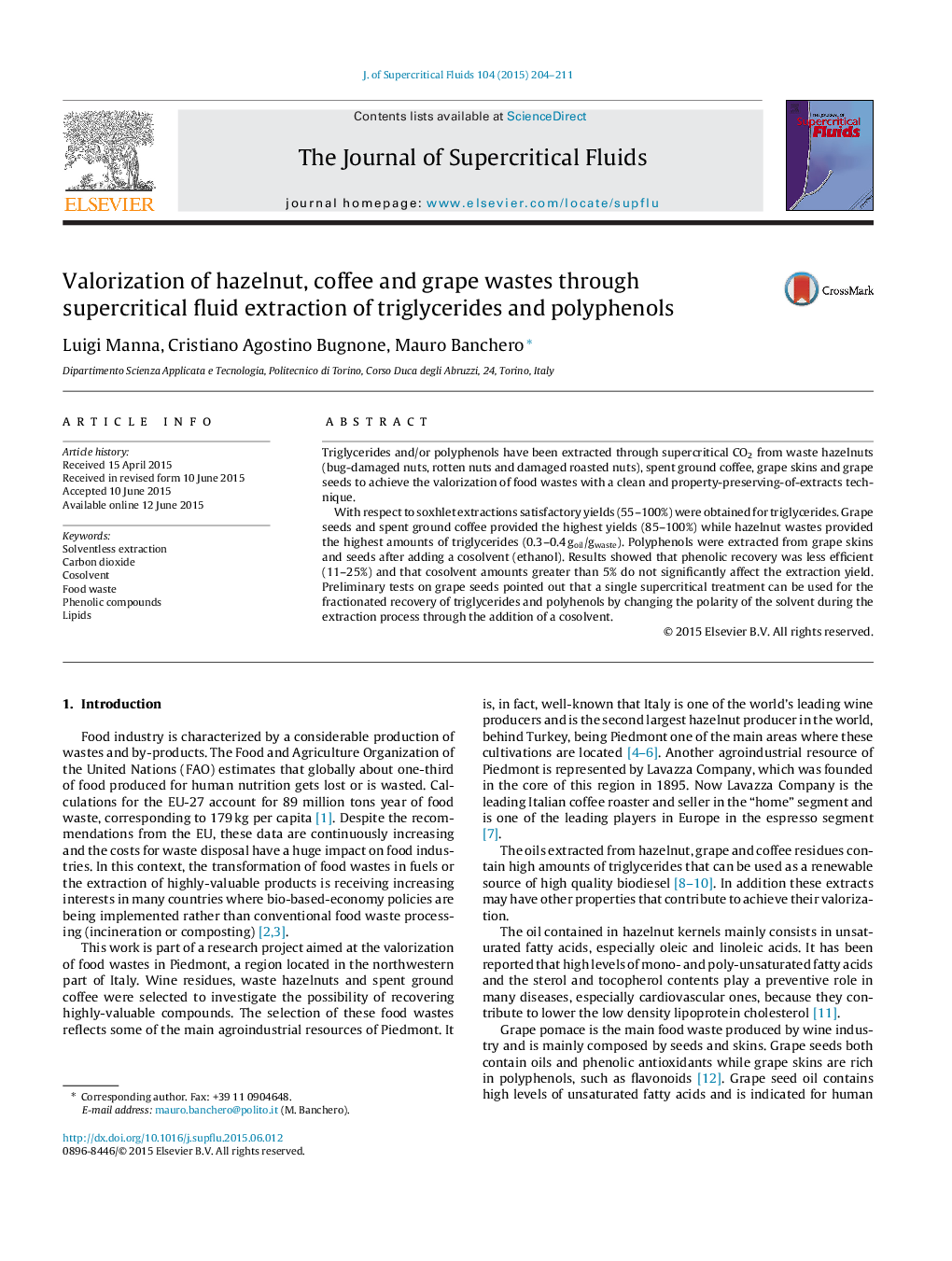| Article ID | Journal | Published Year | Pages | File Type |
|---|---|---|---|---|
| 230124 | The Journal of Supercritical Fluids | 2015 | 8 Pages |
•Triglycerides were extracted from waste hazelnuts, spent ground coffee, grape seeds.•Polyphenols were extracted from grape skins and seeds in presence of a cosolvent.•Satisfactory extraction yields were obtained at 500 bar and 60 °C for triglycerides.•Phenolic extraction was not affected by cosolvent amounts higher than 5%.•Fractionated recovery of triglycerides and polyphenols from grape seeds is possible.
Triglycerides and/or polyphenols have been extracted through supercritical CO2 from waste hazelnuts (bug-damaged nuts, rotten nuts and damaged roasted nuts), spent ground coffee, grape skins and grape seeds to achieve the valorization of food wastes with a clean and property-preserving-of-extracts technique.With respect to soxhlet extractions satisfactory yields (55–100%) were obtained for triglycerides. Grape seeds and spent ground coffee provided the highest yields (85–100%) while hazelnut wastes provided the highest amounts of triglycerides (0.3–0.4 goil/gwaste). Polyphenols were extracted from grape skins and seeds after adding a cosolvent (ethanol). Results showed that phenolic recovery was less efficient (11–25%) and that cosolvent amounts greater than 5% do not significantly affect the extraction yield. Preliminary tests on grape seeds pointed out that a single supercritical treatment can be used for the fractionated recovery of triglycerides and polyhenols by changing the polarity of the solvent during the extraction process through the addition of a cosolvent.
Graphical abstractFigure optionsDownload full-size imageDownload as PowerPoint slide
